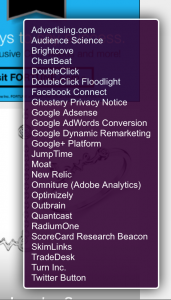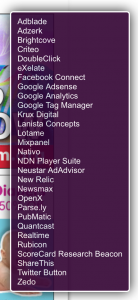By most accounts, American Football[footnote]… hey, I’m overseas now, have to distinguish! 🙂 [/footnote] started out with humble beginnings: a college sport that branched off association football (rugby) that spawned a bunch of disorganized professional organizations that eventually coalesced into the NFL and the college football behemoths we know about today.
The game started in the mid 1800s. The first professional game was in the 1890s, with the first player getting a secret single game contract that paid him $500 (a staggering $13,000 in 2016 dollars). By 1920, what would be the NFL was born. Players were averaging a few thousand dollars a year ($27K in 2016 dollars) by the 30s and often took second jobs to make ends meet. By the 70s, the modern game and the college game began to take the form we see today. The rest you know: Billions of dollars and a billion fans watching for it’s marquee event.
Parallels
In the late 90s, a new genre of competition now called MOBAs (multiplayer online battle arena) came to be. Derived from a popular real time strategy game, Starcraft, it has since spawned a growing industry of games in that genre. A few games, League of Legends (LoL) and Dota 2, have tournaments with million dollar prizes. They have college clubs around the world, including at a few you may have heard of. They even have their own doping problems.
Discovery
ESPN streamed a Dota 2 tournament in 2015 and even broadcast a MOBA on ESPN2 last year. Hard core sports fans were less than impressed.
I admit, I also was a little confused why a game I personally had never heard of, let alone played, was worth broadcasting on TV. Being me, that meant I started doing my research: learned about big prizes and huge audiences, read about the massive popularity of eSports in Korea, and looked at the games themselves.
That these games are the popular tournament ones makes sense to me. I used to love RTS games back in the day[footnote]I was a decent Starcraft player in my youth, and related titles like Warcraft III and Command and Conquer are still some of my favorite games. And wow, I didn’t realize C&C was still being released…[/footnote]. These RTS games are the predecessor to LoL, Dota 2, and Vainglory. MOBAs still share a lot in common with their ancestors. These games are a mix of:
- pure reflex and physical skill
- complex strategy carried out on a deceptively simple field
- clear, easy to understand objectives
Actually, kind of like the NFL.
In other words, if you don’t play, you can still tell what’s going on at a basic level (kill the other team, take an objective). But if you play… wow, there are layers to unfold and strategies to debate and technique to admire.
I don’t play Dota or LoL, which is why a single Dota 2 broadcast couldn’t keep my attention for the whole event. I thought it was cool, recognized the RTS heritage, and basically went back to watching sports.
Revelation
One day, I picked up Vainglory. It’s a free MOBA for iOS which was featured during an Apple event. I dove in and immediately was hooked. I wrote about Vainglory (indirectly) last year. At that time, I had been playing the game frequently for months, so now (except for a couple month hiatus around the birth of my daughter) I’ve been playing this game for over a year. I literally play a round most nights before I head to bed.
I’m naturally competitive, and so naturally I want to be good at this game… Which is when the whole thing finally clicked.
In the Twitch post, I likened watching Twitch to the Golf Network. Boring if you’re not a golfer, but a great source of tips and help if you are. This is true of the entire community around video gaming now. For example, I’ve been watching videos on YouTube like BenTimm1’s videos to learn strategy and tactics. Tournaments are often streamed on Twitch.tv, so that’s another good resource.
Vainglory also has televised tournaments in Korea. The Vainglory IPL is broadcast on OGN, “a South Korean cable television channel that specializes in broadcasting video game-related content and eSports matches.” Here’s one of their broadcasts of a Vainglory IPL final:
Those are pretty good production values, which isn’t very surprising given the popularity of eSports in Korea. You can see a huge improvement, though, as each subsequent tournament is streamed. There’s a big improvement in the commentary, for example, even from the Vainglory World Invitational final, which took place right before the IPL tournament embedded above.
It’s important to note that this is for Vainglory, a relative newcomer to the MOBA and eSports world. Take everything I’ve said above and amplify it for LoL or Dota 2. This is a shot from Wikipedia of the Dota 2 finals crowd in Seattle:

Legitimacy
While the Great Depression hurt the growth of the NFL, it did provide one benefit: it convinced otherwise respectable men to turn to football as a primary source of income. These were college educated men, disproportionately from white collar families who probably would’ve pursued other opportunities. This raised the talent level, making the league stronger and likely creating a feedback loop[footnote]I didn’t find too many sources aside from that one book (which I only have the Google excerpts for – it’s out of print, it seems). The draft came to be toward the end of the Depression and pre-WWII, which could correlate. It’s unclear (to me, right now) if the draft initially was because of an abundance of potential players or a way to entice players in. Worth doing more reading around this.[/footnote].
Vainglory, my favorite, is still small, paying out 10s of thousands for their grand prizes. Dota 2 has much higher payouts and an enormous prize pool. LoL is further along in their growth, and their tournaments provide a sense of where things are going. Riot Games, makers of League of Legends, provides salaries for their tournament players along with travel stipends. Make the choice to leap into professional eSports easier and the talent should follow.
All of that combined makes being a professional “League of Legends” player a viable career opportunity. This helps the game reach its full potential, because we want to avoid our pro players coming under financial stress and having to hold down part-time jobs. We want to make it so being a pro player is a completely viable career opportunity.
It’s still not huge money. With sponsors involved, some of these players are making a decent living, even if they need to also have a side job. Kind of like the early NFL.
Prediction
The big MOBAs are growing the infrastructure around eSports in a way that points to a sustainable future. There are campus organizations forming along with amateur associations. There’s also more mainstream acceptance of gaming thanks to smartphones, and thus a bigger potential audience. The choice to play competitively is getting easier to make for players. Those trends just need to continue in the same direction, and eSports could be a huge thing. Maybe… kind of like the NFL.





